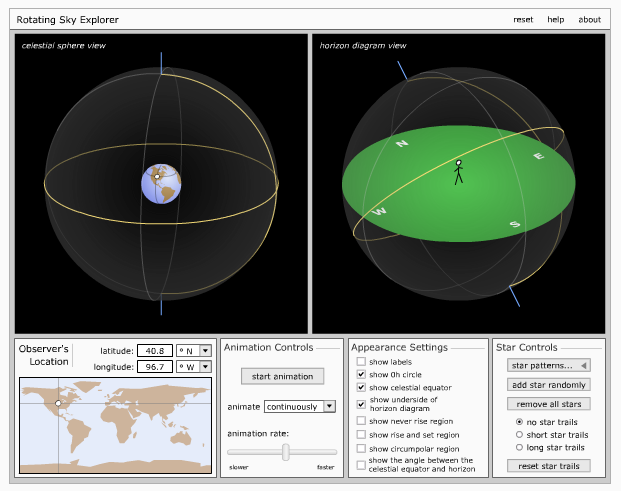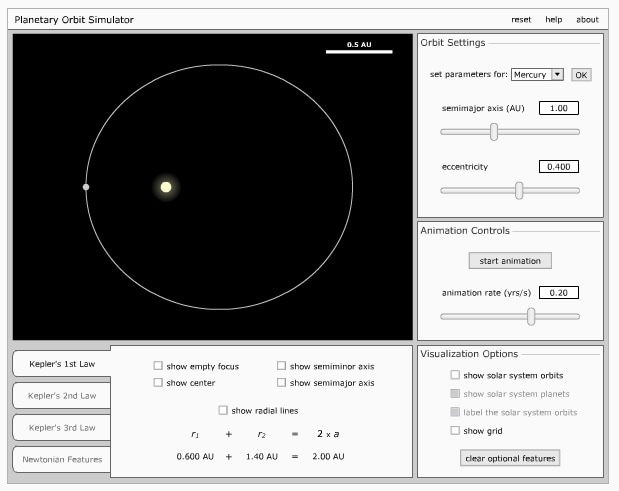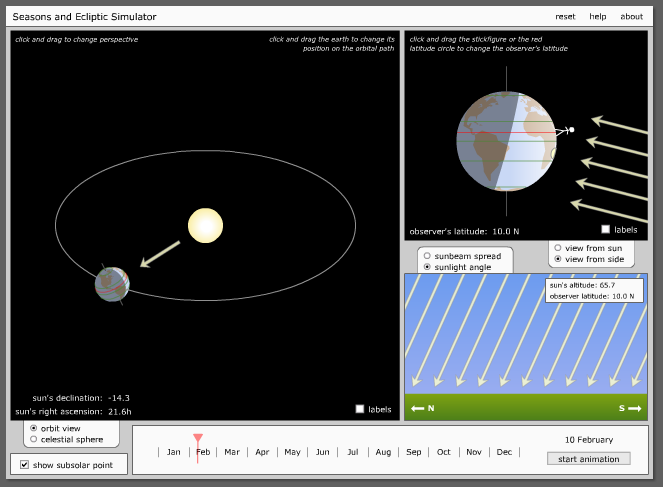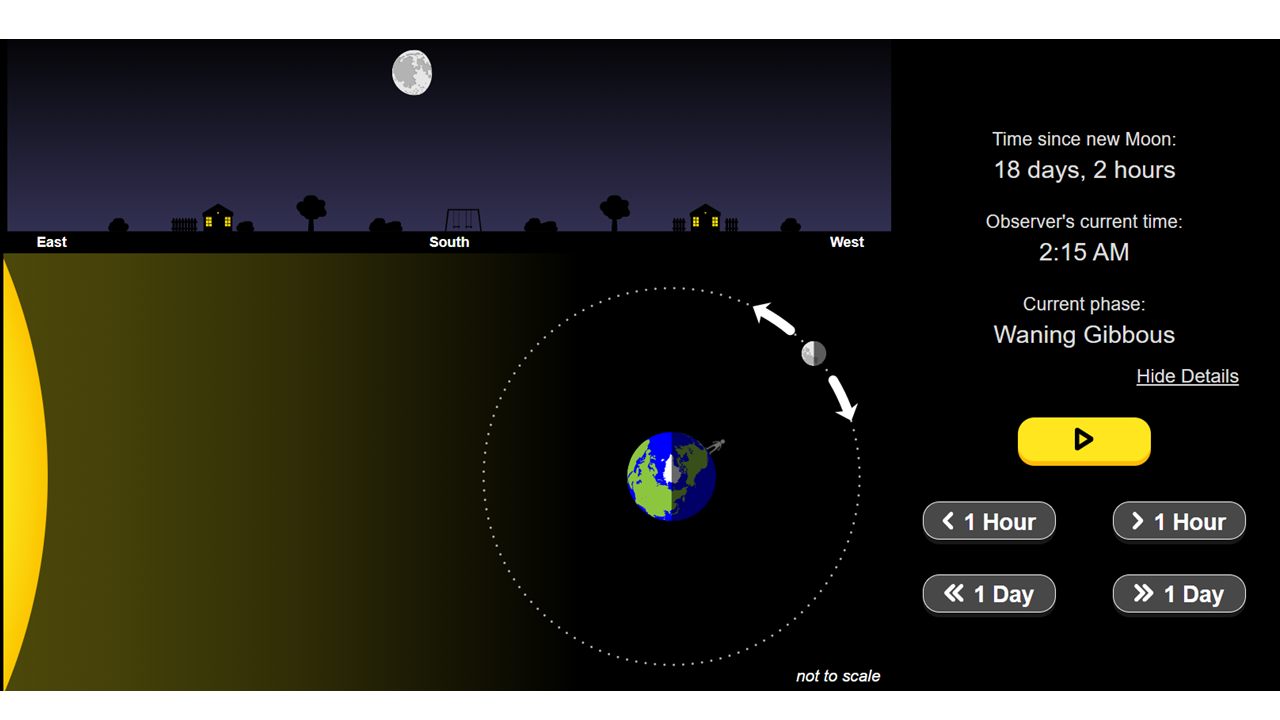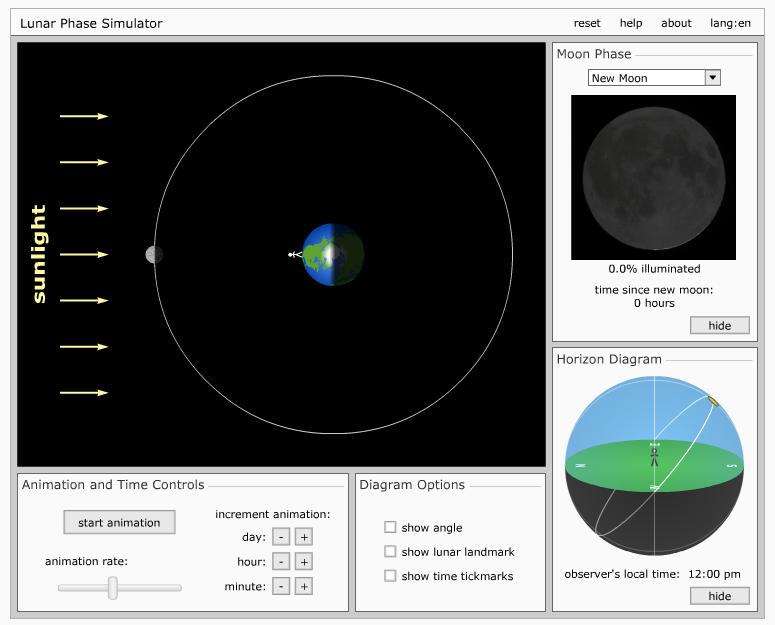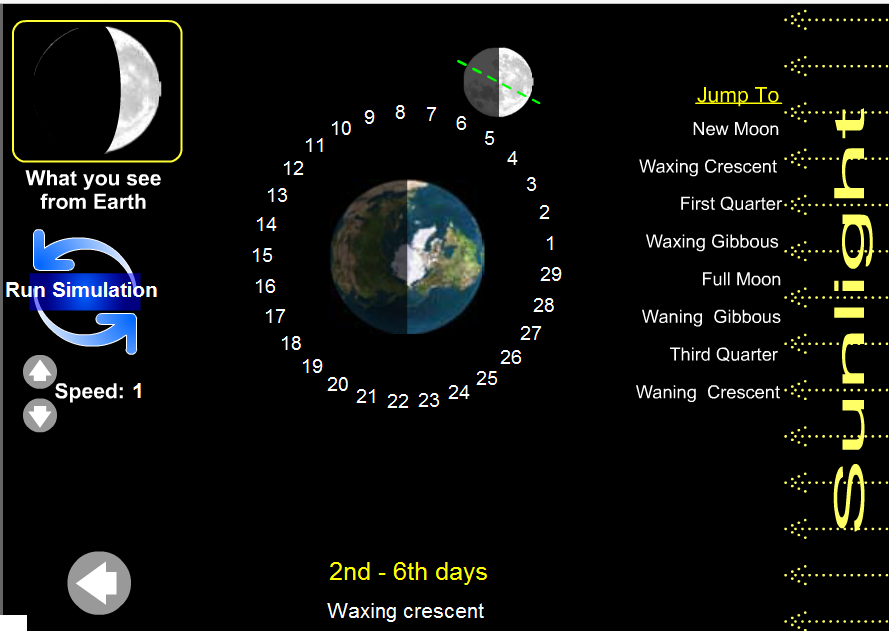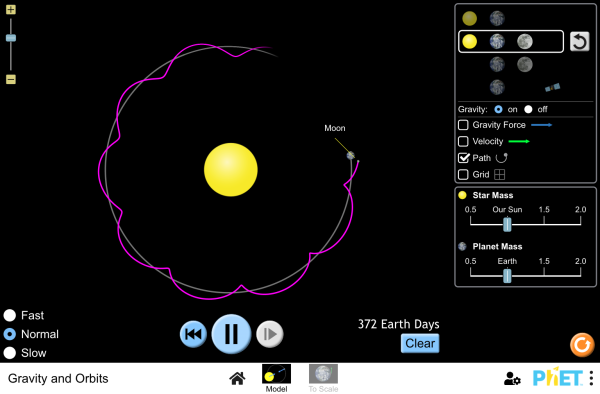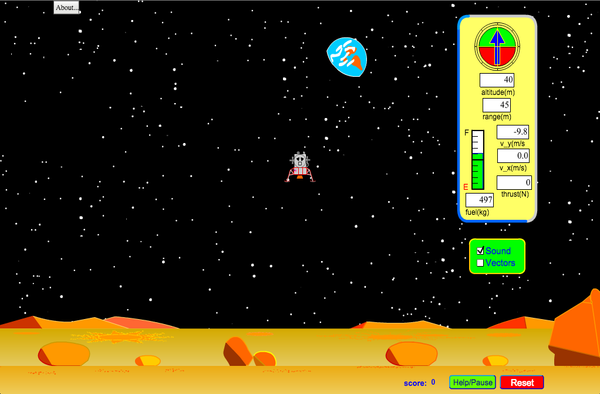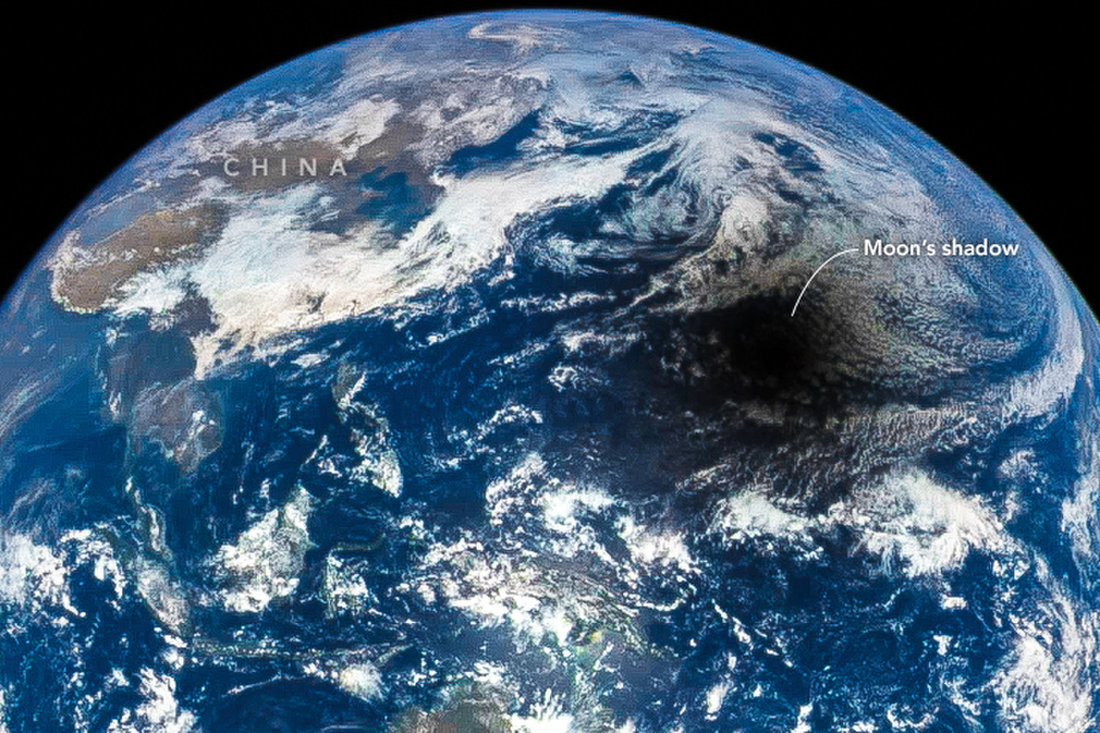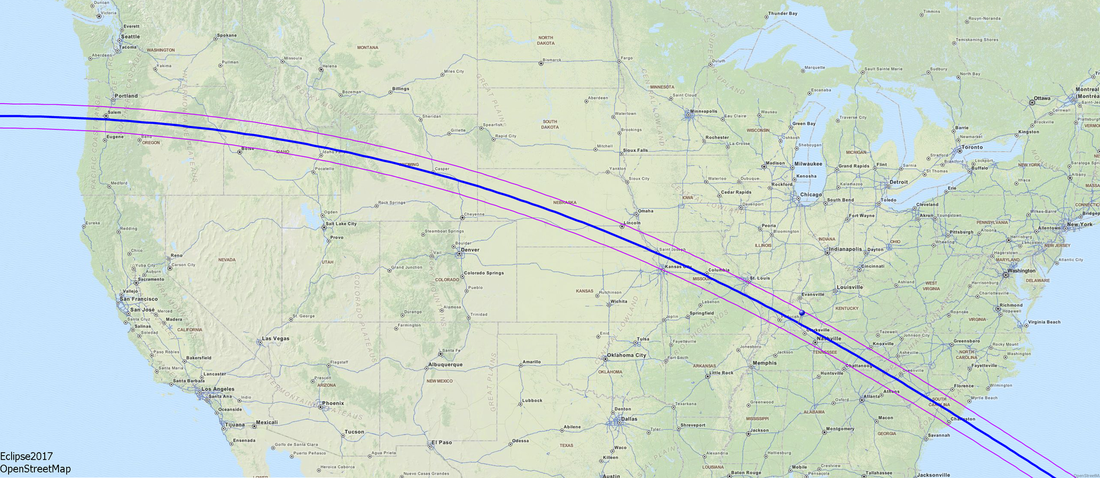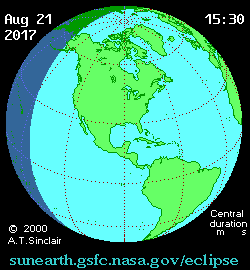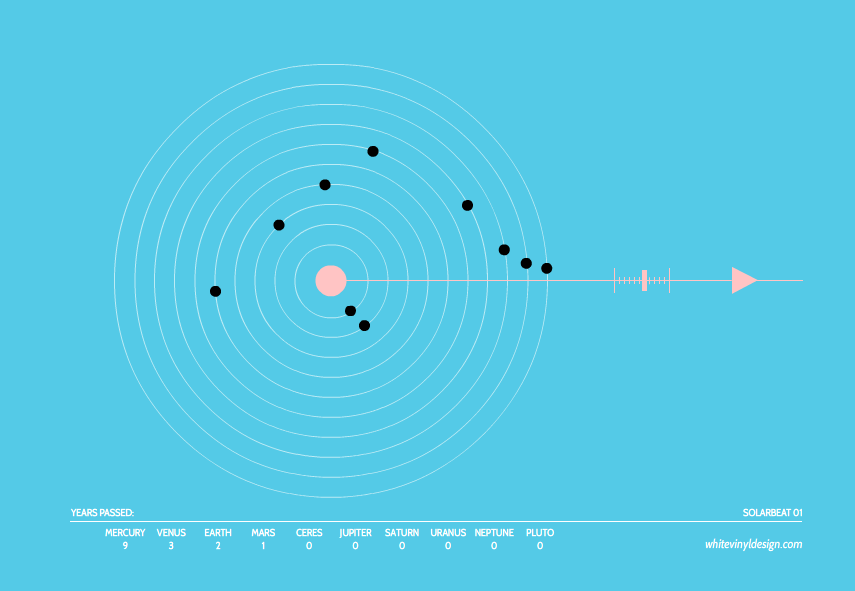21 Aug 2017 - a total eclipse occurred in Charleston, SC. Your physics teacher and his long-suffering wife drove from Boston especially to see the 1.33 minutes of totality. The clouds thinned out enough to see it! There was thunder and lightning at the same time. Very cool. Our photos were a bit rubbish. This was copied from Charleston's local paper the Post and Courier.
This unit combines the S7 topic of Space and the S9 topic of Gravity. It mainly concerns the Sun, Earth and Moon system and how their apparent motions affects life here on Earth. Then we expand outwards to look at the Solar System as a whole and our place in the Universe. We will discuss orbital motion in some detail and research the various types of satellites that are used. This is a fun unit, however there are a lot of misconceptions about both gravity space that need to be cast aside!
Resources
There are probably more videos, animations and simulations for astronomy and astrophysics than any other area of science! These are a selection of some of the best ones that I have seen. Some have been found by students. The one thing in common with all of them is that they are not to scale. The best one to try to deal with that is the PhET Gravity and Orbits simulation, which gives an idea, but you will quickly go back to the 'not to scale' cartoon option as it is hard to see anything! Clicking the image should take you to the simulation or video clip. Note: many of these simulations are written in Flash and won't work on iPads.
A - Gravity
Objectives:
- To understand that an object on Earth has weight because of gravity
- Recall the direction that gravity pull and the factors that affect its strength.
- To be able to calculate the weights of given masses and gravitational field strengths.
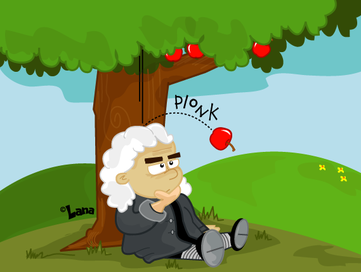
The story goes that Newton discovered gravity when an apple fell on his head whilst he was sitting chilling out under an apple tree in England. The story is famous and may well be true, but Newton did not "discover" gravity. He realised what gravity was and how it behaved! He discovered the "Law of Gravitation". Gravity is often described as "what goes up, must come down". This is generally true in our everyday experience as we can't thrown thing up fast enough to escape the Earth's gravity \(11.6\, \text{km/s}\). Another common misconception is that there is no gravity in space - perpetuated by videos of astronauts floating around in the space station! Argh! There IS gravity in space, after all that is what holds the Earth in orbit around the Sun and the Moon in orbit around the Earth. Oh well....
Oddly, scientists still do not fully understand how gravity works and what causes it! But that is a story for another day (year).
Gravity is the attractive force between any two masses, anywhere. Its strength depends on the size of the two masses and the distance between them. The further apart they are, the weaker the gravitational force. The strength of the Earth's gravity at the surface is denoted by the symbol, \(g\).
\[g=10\,\text{N/kg}\]
This means that every kilogram of mass is being pulled towards the Earth by a force of \(10\,\text{N}\). So a \(50 \,\text{kg}\) student feels a downward force of \(50 \times 10 = 500 \,\text{N}\). This force has a special name - weight. So, strictly speaking, your weight is the force that gravity pulls on you and not your mass in \(\text{kg}\). This distinction is often overlooked. The surface gravity of the Moon is only \(1.6 \,\text{N/kg}\), a sixth that of Earth's. So if you were lucky enough to go to the Moon, you would still be the same size and mass, but the force pulling you downwards would only be \(1/6\) as much.
Oddly, scientists still do not fully understand how gravity works and what causes it! But that is a story for another day (year).
Gravity is the attractive force between any two masses, anywhere. Its strength depends on the size of the two masses and the distance between them. The further apart they are, the weaker the gravitational force. The strength of the Earth's gravity at the surface is denoted by the symbol, \(g\).
\[g=10\,\text{N/kg}\]
This means that every kilogram of mass is being pulled towards the Earth by a force of \(10\,\text{N}\). So a \(50 \,\text{kg}\) student feels a downward force of \(50 \times 10 = 500 \,\text{N}\). This force has a special name - weight. So, strictly speaking, your weight is the force that gravity pulls on you and not your mass in \(\text{kg}\). This distinction is often overlooked. The surface gravity of the Moon is only \(1.6 \,\text{N/kg}\), a sixth that of Earth's. So if you were lucky enough to go to the Moon, you would still be the same size and mass, but the force pulling you downwards would only be \(1/6\) as much.
B - Earth and Sun
Objectives:
- to describe the apparent movement of the Sun across the sky
- to describe the Sun as rising in the East and setting in the West
- to understand what causes the changing of the seasons
From our perspective the Sun rises in the east (St George's), arcs across the southern sky along South Shore and sets in west (Somerset). In the summer, it rises earlier and further east and arcs higher in the sky and sets later and further west than in the winter. The characteristic consequence of this are longer days, shorter nights and higher temperatures in the summer than the winter. The stars appear to rotates about the North Star (Polaris) in the same arc as the Sun.
Until the 15th century it was believed that the Sun went around a stationary Earth - makes perfect sense as we don't move and the Sun does. Wrong... Nicholas Copernicus realised that it is the Sun that is stationary and the Earth SPINS on axis once in 24 hrs to produce the daily diurnal cycle and orbits the Sun once in 365 days or so to produce the annual cycle. The seasons are caused by the Earth's axis being tilted relative to the orbital plane by 23.5 degrees.
Misconceptions:
1 - the seasons are caused by the slightly ellipitical orbit. This is disproved easily by the fact that when it is summer in the northern hemisphere, it is winter in the southern hemisphere. Also, the Earth is actually closest to the Sun in January.
2 - that gravity has something to do with the Earth's spin. If there was no spin, we would still be attracted to the Earth. Things are actually 'thrown off' a spinning object, so gravity keeps us in place.
Until the 15th century it was believed that the Sun went around a stationary Earth - makes perfect sense as we don't move and the Sun does. Wrong... Nicholas Copernicus realised that it is the Sun that is stationary and the Earth SPINS on axis once in 24 hrs to produce the daily diurnal cycle and orbits the Sun once in 365 days or so to produce the annual cycle. The seasons are caused by the Earth's axis being tilted relative to the orbital plane by 23.5 degrees.
Misconceptions:
1 - the seasons are caused by the slightly ellipitical orbit. This is disproved easily by the fact that when it is summer in the northern hemisphere, it is winter in the southern hemisphere. Also, the Earth is actually closest to the Sun in January.
2 - that gravity has something to do with the Earth's spin. If there was no spin, we would still be attracted to the Earth. Things are actually 'thrown off' a spinning object, so gravity keeps us in place.
Article about how the Earth's orbit and tilt change the apparent position of the Sun at noon. Cool photo. Can be a bit complicated and not required for High School science courses.
Another link to the Analemma phenomenon. (way outside the syllabus by the way)
Day Arcs: cool sequence of images from Wikipedia about how the Sun's path changes depending on your latitude. (click through them)
C - The Moon
Objectives:
- that the phases of the Moon are caused by shadows
- the position of the Moon to create a new-moon and full-moon
- how to explain how eclipses of the Sun and Moon occur
During a lunar month (roughly 29 days), the Moon appears to change shape from a crescent to full and back. These changes are called the phases of the Moon. They control the tides of the ocean - we get bigger tides when the Moon is full and two weeks later when it is a new moon. As well as the shape changing, its position in the sky relative to the Sun changes. A waxing crescent (the right side) is always viewed to the south-west in the evening and the warning crescent (the left side) is seen just before dawn. A full moon rises in the east as the Sun sets to the west.
|
Simulated views of the moon over one month. Note the smooth changes as the Moon goes from new to full to new again. Also that we see the right side as a semi-circle as the Moon is waxing and the left side as it is waning. Image via Tomruen. (Taken from http://earthsky.org/ )
|
|
Lunar Phase Simulator from the consistently excellent simulations produced by the University of Nebraska-Lincoln, USA. The image at the bottom right corner is the best to show how the Moon appears to be in different places in the sky at different times. One thing that none of the simulations do is to change the observer's latitude and longitude on the surface of the Earth.
|
|
Lunar Phases - this one allows you to drag the Moon around in her orbit manually and gives the names of the phases. Simple but effective! From: http://aspire.cosmic-ray.org
|
|
PhET Simulation - Lunar Lander. The objective is to manage a safe landing using the minimum amount of fuel. In 1969 Neil Armstrong and Buzz Aldrin only just manged to land the Eagle with only 20 seconds of fuel to spare. This was due to the planned landing area turning out to be a boulder field.
|
|
|
BBC Video clip about Eclipses and the Aurora. Bit dated but classic.
|
|
A total solar eclipse as seen from space. The area of totality will be in the centre, the shadow surrounding it is known as the penumbra. In this region observers will see a partial eclipse. Photo is a still from a video. Click on the link to see the video. Credit: www.space.com
|
|
Path of the solar eclipse 21 Aug 2017. Images taken from wikipedia.org.
For details - click here |
GreatAmericanEclipse.com - everything that you ever wanted to know about the eclipse of 2017!
Lunar Eclipse - 21 Jan 2019 (which we couldn't see from Bermuda as it was gale force winds and heavy rain. Wah!)
D - The Solar System
Objectives:
- the order of the planets
- how to relate the size and scale of different planets
- some of the features of each planet
- to analyse data from a table and extract information
|
|
Video clip from the excellent "Bill Nye the Science Guy" TV series. Bill has assembled a scale model of the Solar System and uses a bike to travel the distances. Note that in the real Solar System the planets are not aligned in a straight line!
|
|
Solar Beat by White Vinyl Designs - This rather kooky little simulation demonstrates a) the relative time scales of the planetary orbits and b) how they never will line up like they do in the text book pictures. The inter-planet distance are not at all to scale, but you will find yourself egging on Pluto to finish its orbit! (Note: only works on a laptop and not a ipad/android device.)
|
|
|
The Solar System - A bunch of students build a scale model of the Solar System in the Navada desert.
|
E - Satellites
Objectives:
- recall what a satellite is and some of the uses of them
- to understand the differences between polar and geostationary orbits
- to understand that even if astronauts appear weightless, there is still gravity in space. *challenging*
International Space Station Tracker - very cool!
|
|
|
F - Rockets
Objectives:
- to understand the basic principles of how rockets work
- to understand that to escape the Earth’s gravity rockets need to be as powerful and as light as possible.
|
|
|
G - The Universe
Objectives:
- to know the order of sizes: asteroid, moon, planet, star, solar system, galaxy, Universe
- to know the shape of our galaxy, the Milky Way
- to understand some of the problems of space flight
|
|
The Complete Cosmos - Secrets of the Solar System. Detailed documentary.
|
By Bruno Gilli/ESO - http://www.eso.org/public/images/milkyway/, CC BY 4.0, https://commons.wikimedia.org/w/index.php?curid=11657991
